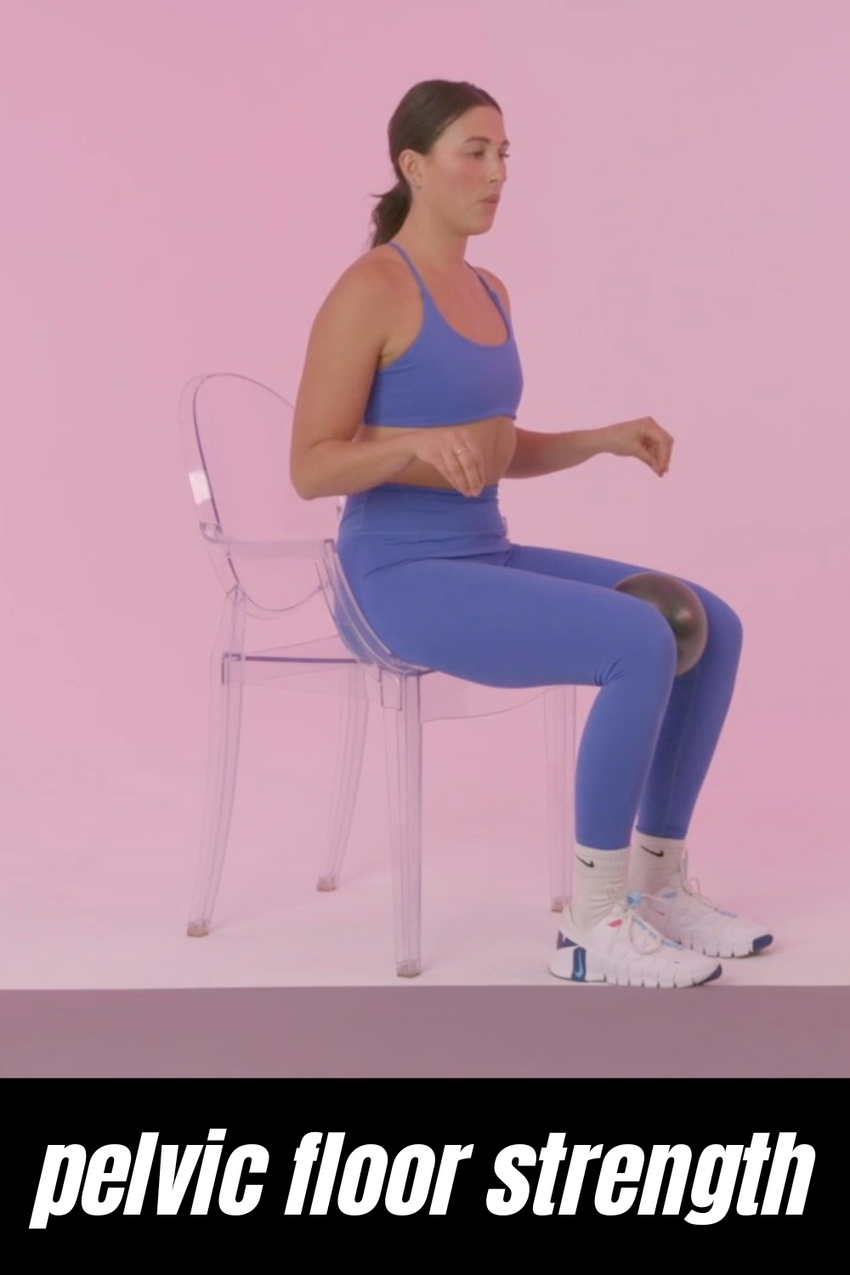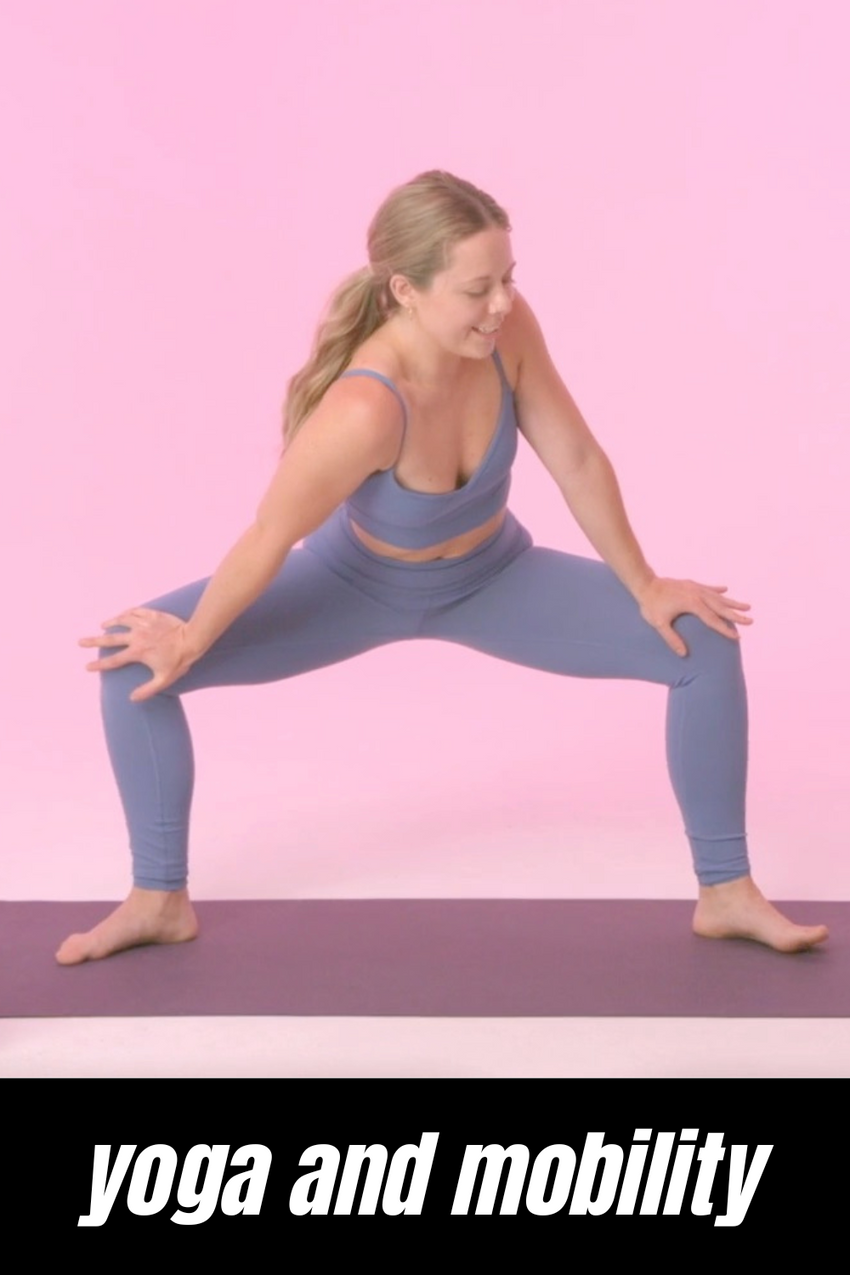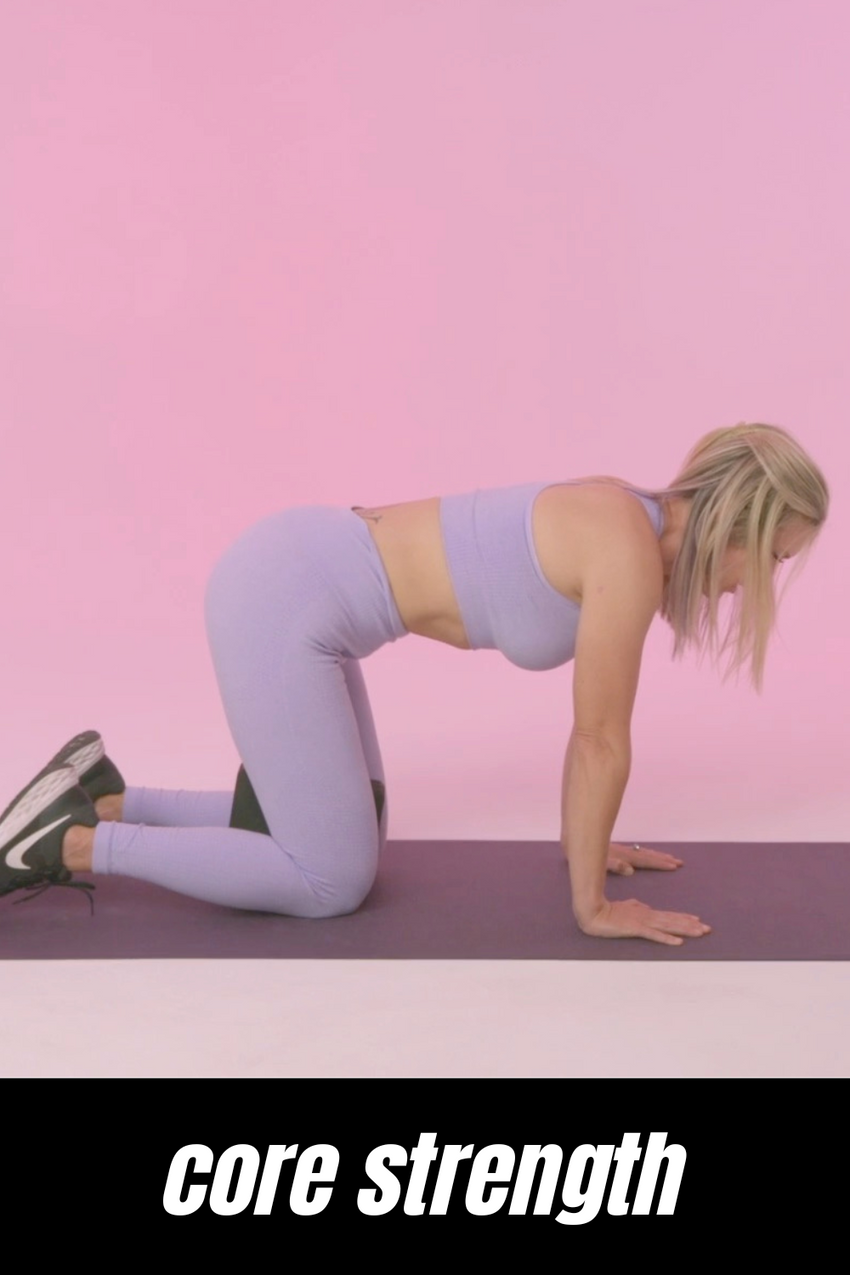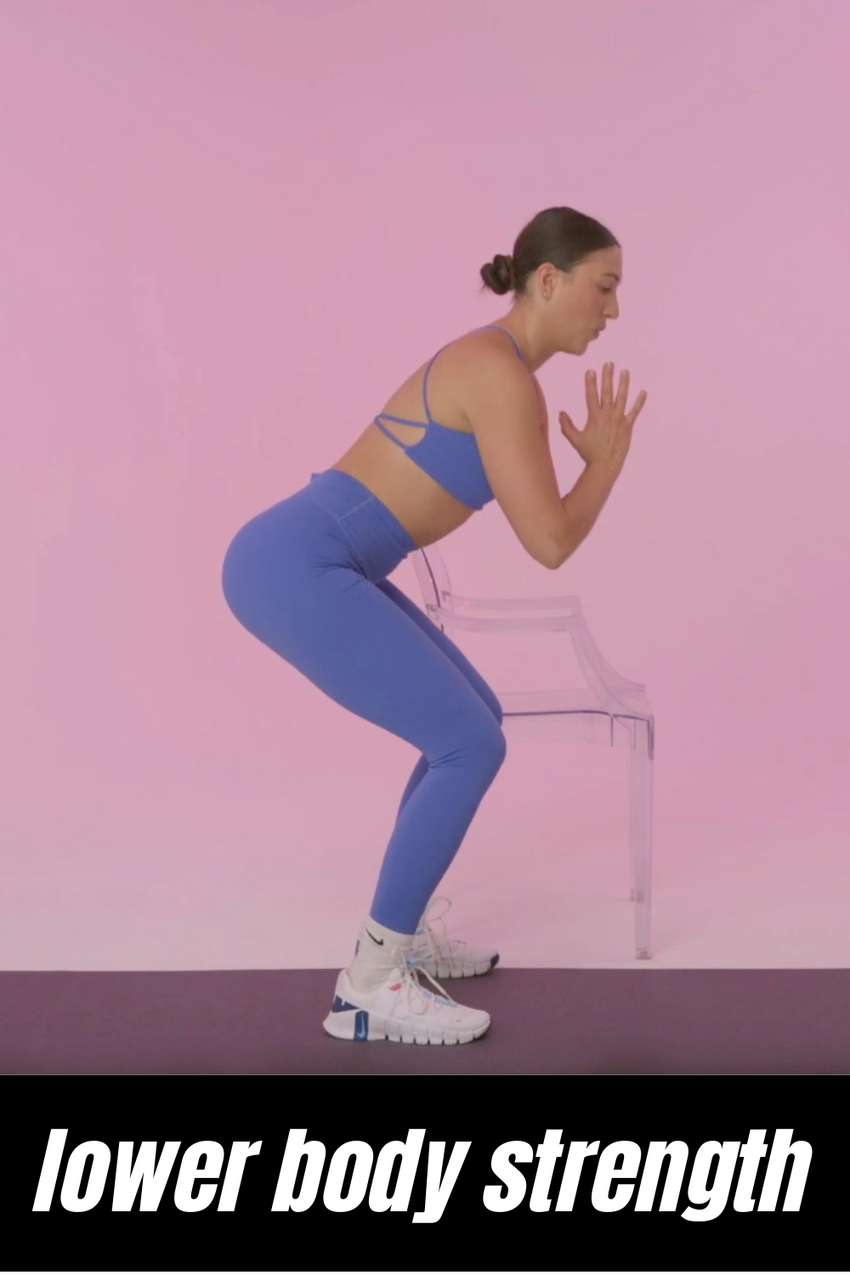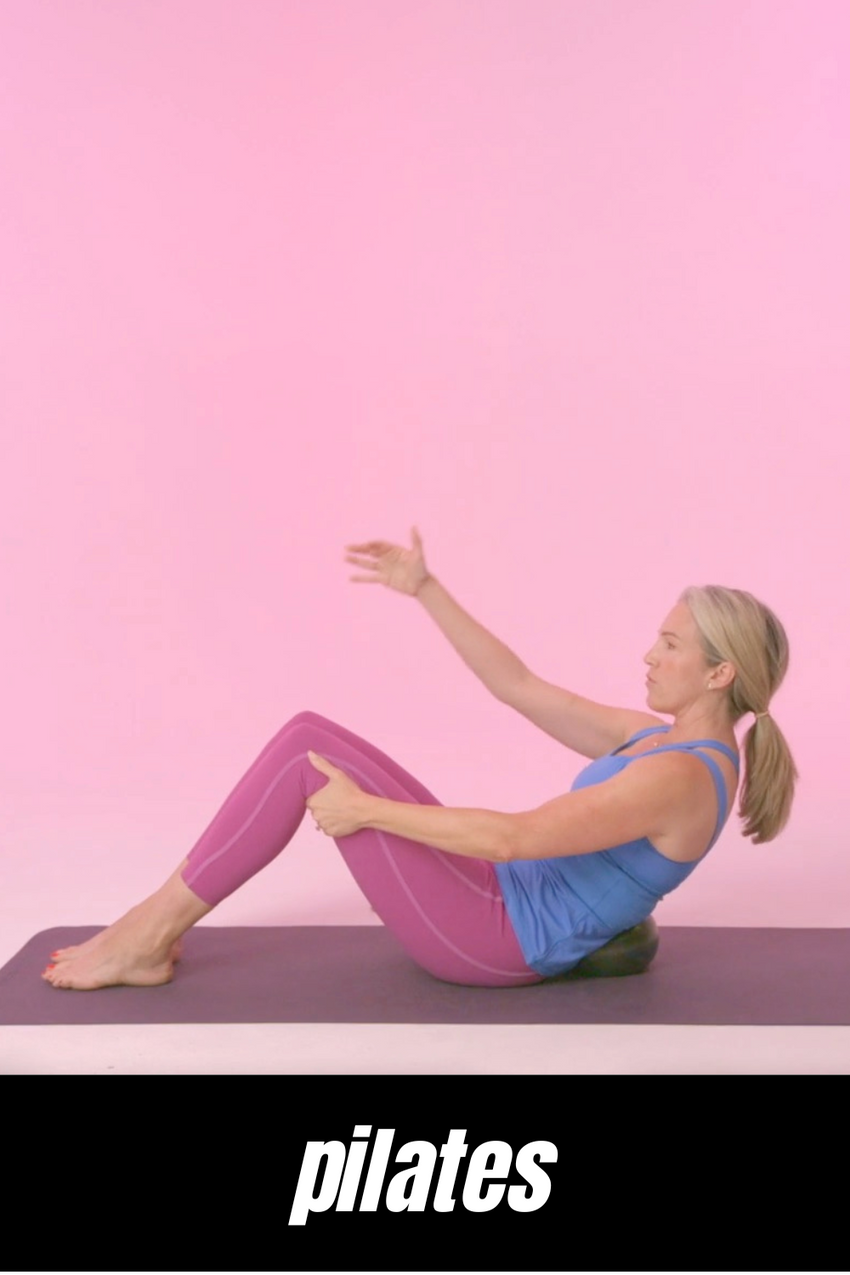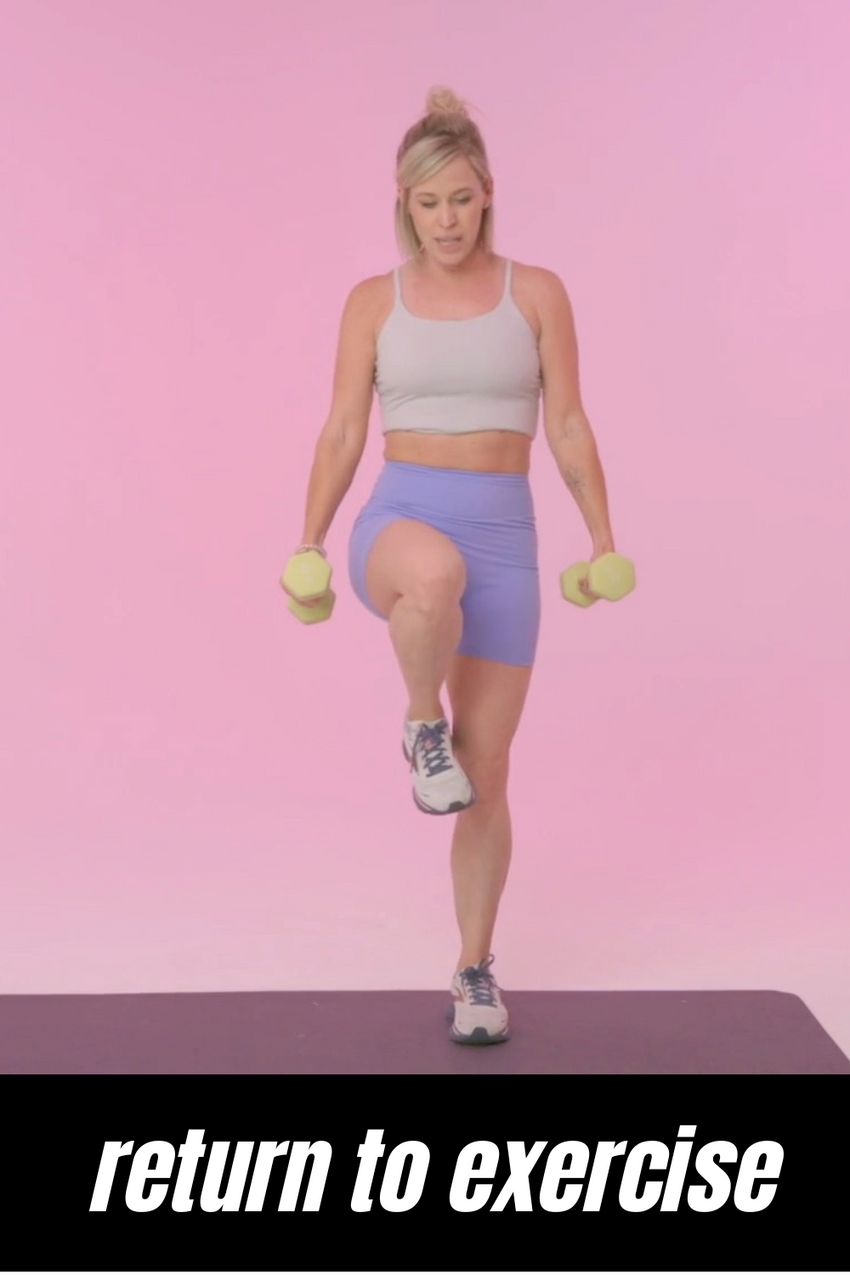Vagercise Pelvic Floor Exercise and Education Course
Reclaim your pelvic health in the next six weeks with more than 65 classes taught by pelvic floor physical therapists—all for less than the cost of a single PT visit.
About the Course
About the Course
With 12 hours of on-demand video content, Vagercise allows you to:
- Choose from more than 65 classes taught by pelvic PTs using clinically-proven information and exercises
- Spend less on the the entire program than you would on a single physical therapy visit (typically $200-$300 for the initial evaluation)
- Learn restorative pelvic floor and core techniques that help resolve bladder and bowel dysfunction, pelvic pain, diastasis recti and more
- See symptom improvement after 6 weeks of consistent exercise
- Take the classes you like, when you want to—in the comfort and privacy of your home, in as little as 5 minutes
- Stay motivated with achievable workouts, upbeat music and instructors cheering you through every move
Class Topics
Class Topics
The Vagercise course consists of 12 hours of exercise and educational videos.
The self-paced, on-demand classes vary in length from 3 to 30 minutes and cover these topics.
Must-Watch Classes
- Pelvic Floor 101
- Pelvic Floor Assessment
- Breathing Essentials
- Core Essentials
- Posture Essentials
Introduction to Pelvic Floor Issues
- Bladder Leaks
- Pelvic Pain and Tension
- Diastasis Recti
- Pelvic Organ Prolapse
- Pooping Problems
- Lower Body Pain: Hips, Back and Tailbone
Problem Solving
- Leaks with Sneezing and Coughing
- Leaks with Jumping
- Leaks with Lifting
- Leaks with Walking and Running
- Urinary Urgency and Overactive Bladder
- Painful and Unsatisfying Sex
- Bathroom Habits
- Tools for Pelvic Pain Relief
Strength
- Pelvic Floor Strength series
- Musical Kegels series
- Core Strength series
- Hip and Glute Strength series
Advanced Exercise
- Return to High-Impact Exercise series
- Pilates series
Yoga and Relaxation
- Yoga for Pelvic Floor Relaxation series
- Yoga for Pelvic Pain series
- Guided Meditation for Pelvic Floor Relaxation
Stretching and Mobility
- Pelvic Floor External Release
- Pelvic Pain Stretch
- Hip Pain Release and Stretch
- Low Back Pain Release and Stretch
- Tailbone Pain Release and Stretch
Time Commitment
Time Commitment
Moms don't have time for long appointment waits and rigid workout requirements.
With our guidance, you can choose the Vagercise classes that are best for your symptoms and your schedule.
Typical class lengths include:
- Education: 3-10 minutes
- Strength: 5-15 minutes
- Yoga and Relaxation: 10-30 minutes
- Pilates: 20-25 minutes
We recommend taking exercise classes for a total of at least 60-90 minutes per week for at least 6 weeks.
Your class schedule will depend on your specific needs.
Some pelvic floor issues may take a few weeks to resolve, while others may require months of consistent exercise.
See our class overview for more details and sample schedules.
Cancel or Pause Anytime
Cancel or Pause Anytime
We're confident that Vagercise will help you improve your pelvic floor issues.
But if it's not helping—or you just can't commit right now—you can cancel or pause your monthly subscription anytime.
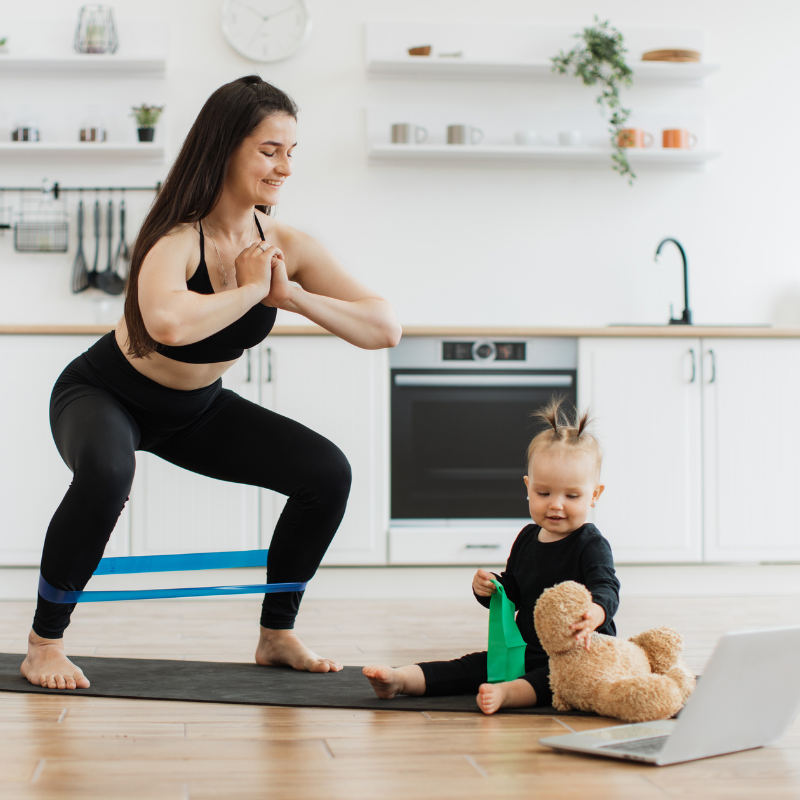
Pelvic PTs Think You Should Vagercise
Frequently Asked Questions
Is Vagercise Right for Me?
Which postpartum issues does Vagercise address?
Which postpartum issues does Vagercise address?
Vagercise offers exercises and information for pelvic floor symptoms including but not limited to:
- Bladder leaks from sneezing, coughing, laughing, jumping, running and exercising
- Feeling a frequent and/or urgent, uncontrollable need to pee
- Leaks of poop or gas
- Difficulty peeing or pooping, including constipation
- Feeling heaviness or bulging in the vagina, which may be pelvic organ prolapse
- Diastasis recti, a separation of the abdominal muscles resulting in abs that are squishy or bulging
- Weakness in the core, glutes, hips and low back
- Pain with sex, pelvic exams or tampon use
- Lack of sexual sensation or difficulty reaching orgasm
- Pain or tension in the low back, hips and tailbone
I'm not sure what's going on with my body. Should I take the course?
I'm not sure what's going on with my body. Should I take the course?
Pelvic floor issues can be complex, and the same symptoms can have different—and numerous—causes.
For example, one woman may experience bladder leaks because her pelvic floor is too weak, but another may leak because her muscles are too tight.
Vagercise includes more than a dozen educational classes, including Pelvic Floor 101 and a Pelvic Floor Assessment to help you find the right path forward.
I'm pregnant or newly postpartum. When should I start Vagercise?
I'm pregnant or newly postpartum. When should I start Vagercise?
Vagercise is intended for postpartum women who have been cleared by their doctor for exercise, which typically occurs at or after six weeks postpartum.
If you are pregnant or newly postpartum, be sure to ask your doctor before beginning any exercise program.
Please note that Vagercise classes are educational and don’t contain medical advice.
What if I had a baby years—or even decades—ago?
What if I had a baby years—or even decades—ago?
It's never too late to Vagercise, even if your baby isn't a baby anymore.
Pelvic floor issues typically don't get better with time. In fact, they get worse during perimenopause and menopause.
Hormonal changes that occur as early as your 30s can contribute to symptoms like bladder leaks and pain with sex.
With your doctor's permission, you can take Vagercise classes at any time in your postpartum journey—whether you had a baby six weeks, six months or 16 years ago.
How much time do I need to spend on Vagercise?
How much time do I need to spend on Vagercise?
We know you're busy, so we designed the Vagercise library of on-demand classes to give you the flexibility you need.
With our guidance, you can choose the classes that are best for you.
Most educational classes are around 5 minutes. Most exercise classes take less than 15 minutes to complete, with the exception of yoga classes that last up to 30 minutes.
In general, we recommend taking exercise classes for at least 60-90 minutes per week for at least 6 weeks.
See our class overview for more details and sample schedules for specific pelvic floor issues.
What kind of exercise equipment will I need?
What kind of exercise equipment will I need?
A few pieces of exercise equipment will help you get maximum benefit from Vagercise exercise classes:
- Resistance bands
- Pilates ball
- Exercise slider discs
- Yoga block
- Myofascial release ball (can also be tennis or lacrosse ball)
We also recommend using a yoga or exercise mat.
A set of light weights can be used for an optional challenge in some classes.
How do I watch Vagercise classes?
How do I watch Vagercise classes?
How Will Vagercise Help?
How soon will I see results?
How soon will I see results?
Vagercise classes were developed by pelvic floor physical therapists, using the protocols they follow to treat patients in clinic.
With consistent effort and exercise, you should see improvement in your symptoms in about 6 weeks.
But everybody—and every body—is different, and your path to recovery will vary depending on your unique issues, fitness level and the time you dedicate to your recovery.
It can take weeks to change your muscle tissue, whether you're building pelvic floor strength, relaxing tight muscles or pursuing any fitness goal. (Would you really see results from only a few personal training sessions?)
Resolving your symptoms requires consistent effort, whether you're taking the Vagercise course, going to physical therapy or using a pelvic floor product.
Should I see a pelvic floor physical therapist?
Should I see a pelvic floor physical therapist?
There is no virtual replacement for feeling your muscles and diagnosing your issues hands-on.
Every woman could benefit from an individualized assessment by a pelvic floor physical therapist.
But PT isn’t possible for many women—logistically, financially and even emotionally.
A study showed that less than half of women referred to pelvic PT actually started therapy, and only 15 percent completed treatment.
That's why we partnered with pelvic floor PTs to increase access to information and exercises for pelvic floor dysfunction.
Vagercise is an ideal complement to in-person therapy, empowering women to learn more about the pelvic floor and reclaim their health on their own terms.
Will I really be able to improve my health virtually?
Will I really be able to improve my health virtually?
The hands-on (or should we say hands-in) pelvic exam is only one aspect of pelvic floor physical therapy.
A pelvic PT spends much of a typical appointment reviewing educational information about your health and explaining your at-home exercises.
When it comes to actually doing the work, you're usually on your own—with notes or handouts that only provide so much guidance.
You might be confused. You'll probably get bored. And unfortunately, you might give up.
Vagercise classes empower you to exercise consistently and correctly, with PTs guiding you through every move.
Kegels haven't worked for me. Why is Vagercise different?
Kegels haven't worked for me. Why is Vagercise different?
Vagercise isn't only about Kegels, the go-to squeezing maneuver for strengthening your pelvic floor muscles.
And maybe Kegels aren't right for you: They can worsen issues that are caused by pelvic floor tension, including bladder and bowel dysfunction.
Or perhaps, like 25% of women, you've been doing Kegels incorrectly.
Or maybe Kegels are only part of a solution that also involves building core strength and changing your daily habits, like your breathing and posture.
In any case, Vagercise can help.
Our classes cover pelvic floor relaxation, core strength, lifestyle factors and more.
And if you need to do more Kegels, we'll show you the correct technique and even make it kind of fun (check out our Musical Kegels section.)
Can't I find this information on YouTube or Instagram?
Can't I find this information on YouTube or Instagram?
Sure, you can find an influencer talking about Kegels on YouTube or demonstrating an exercise on Instagram.
She might not have earned a doctorate degree in physical therapy, like Vagercise instructors.
Credentials aside, the 12+ hours of content in Vagercise is far more comprehensive than what you see while scrolling.
And when you're searching online for answers, you might not be asking the right questions.
With our combination of exercise and educational classes, Vagercise covers everything you need to know about your pelvic floor—including a lot you probably didn't know.
Won't my pelvic floor issues just go away over time?
Won't my pelvic floor issues just go away over time?
Time heals all wounds. But not necessarily pelvic floor issues.
The prevalence of pelvic floor dysfunction increases with age, affecting 13% of women in their 30s, 23% in their 40s, 31% in their 50s, and so on.
Aging and menopause take a toll on the pelvic floor, as your muscles weaken and falling estrogen levels cause your vaginal tissues to become dry and thin.
Later on, incontinence is one of the most common reasons for admission into assisted living facilities.
It's always the right time to prioritize your pelvic health.
Why Should I Start Vagercise?
Can I use my HSA or FSA account to purchase the course?
Can I use my HSA or FSA account to purchase the course?
You can use your HSA or FSA funds for any purchases on Vagercise.com, including the Vagercise online course and all pelvic floor products.
Why should I trust Vagercise?
Why should I trust Vagercise?
Vagercise classes were developed by physical therapists who have earned a doctorate in physical therapy and specialize in pelvic health.
In leading our educational and exercise classes, our physical therapists share the same clinically-proven information and exercises they have used to treat thousands of patients.
See our Instructors and Research page for more information on the people and science behind Vagercise.
I can't afford the course, but I need help. What should I do?
I can't afford the course, but I need help. What should I do?
Vagercise consists of more than 12 hours of professionally-produced video content designed and taught by pelvic floor physical therapists.
The course is designed to be an affordable complement or alternative to physical therapy. After all, booking a pelvic PT for 12 hours could cost you more than $2,000.
See our cost comparison between Vagercise and other options for more information.
If Vagercise is out of reach, we still want to help! Check out our blog, sign up for our e-mail list and follow us on Instagram, TikTok and YouTube for free educational content.
You also might consider purchasing one of our products for pelvic floor issues, such as:
- A Kegel trainer that aids you in doing strengthening exercises ($100-$400)
- Sexual health products that help make intimacy less painful ($75-$400)
- A pelvic wand for releasing muscle tension internally ($40-$60)
- A set of vaginal dilators for easing muscle tension associated with painful penetration ($80-$400)




